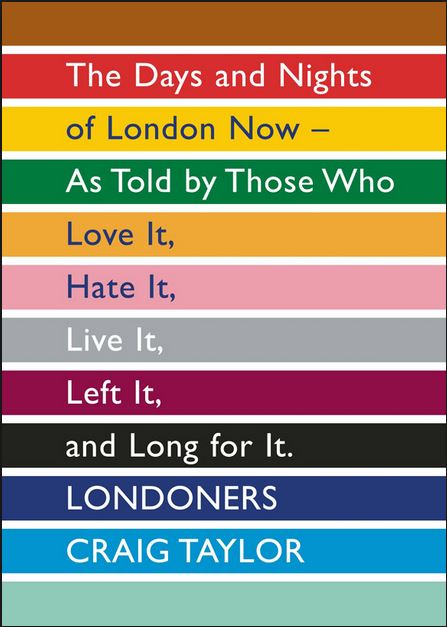Oh, it’s good, and a great book to read before a trip to London! In it, the writer collected hundreds of oral histories form Londoners and compiled many into this book. Here are stories of Londoners in their own words. And a diversity of stories there are.
Because each chapter is a different voice, a different Londoner for the most part, the stories are incredibly varied. And I guess that is the point, after all. This book speaks to the wild eclecticism of the city. A teacher has students whose families are from 50+ different countries. Unlike the U.S. where a child’s first language, if not English, is often Spanish, in London that first language may be Bengali, Mandarin, Bangladeshi, Urdu.
A manicurist (she calls herself “nail technician”) clumps the characteristics of her clientele by ethnicity and provenance:
They’ve all got different temperaments, completely different personalities. South Africans, you either get really laid-back South Africans or you get really uptight South Africans…
Then you’ve got the Dutch. They’re a bit harder going. Trying to get a smile out of them requires a bit more effort and you have to really balance between humor and sarcasm, there’s this really thin line and you say something and go, oh shit, I shouldn’t have said that. I say I’m so sorry, I’m hormonal, and just carry on.
And Americans, the farther west they’re from, the more laid back they are. Then you get the New Yorkers who try to be chilled, but oh God…they’ve got a BlackBerry…an iPhone and a mobile phone…And then all of a sudden the phone rings and they go, ‘Do you mind if I take this?’ ‘Oh, not at all, you go ahead.’ So I sit back and back away and they speak. Then they say, ‘I hope you didn’t mind?’ ‘No that’s all right. If we run over, I’ll just charge you a little bit extra, that’s all right isn’t it?’ All of a sudden, the phones get all put in the bag. Yes! Works every time.
Eastern Europeans…they are trying very hard to integrate…when they get here…they’ll say, ‘I’m Latvian. Bloody immigrant’…they feel they have to defend their nationality or the reason why they’re here…[Y]ou should never have to make apologies for why you’re somewhere.
Then you’ve got all the English. Oh, God, I love them. They’re just really strange people. They’re trying very hard not to be uptight and they take themselves very seriously, and they get stressed very easily.
And the Italians – ah God, the Italians! They’re in a rush all the time…Right. Let me reinvent time then. So we have a standard thirty minutes and then a quick thirty minutes.
Many, many stories touched my heart. Those that come readily to mind are those of the Grief Counselor, the street photographer (of course), the Iranian immigrant, the TfL Lost Property Clerk, the actor, the nightclub door attendant, Stacey the Geordie who came to London, the teacher, the eyewitness, the paramedic, the commercial airline pilot.
Consider the following excerpt from a male-to-female transsexual:
Her memories…have become feminized since her change. She views the world in a feminine way, even films from the past.
‘How would you have viewed Star Wars?’ I ask her.
‘Before, I would have had a crippling fascination with the technology.’
‘And now?’
‘My memories of Star Wars now are to do with the love story in the middle. Princess Leia and whoever that guy was.’
‘And London?’
‘London was about systems, about circuits, connections, roads. It was an emotionless place where things simply operated. They moved from place to place and did their job’
‘And now?’
‘After the change,’ she said, ‘London is an emotional place. I feel the flows of emotion. I see the sadness of buildings, the sad gorgeousness of light on the streets.’
I was reminded as I read this book that if we seek out others, sometimes, if we are patient and truly and actively listen, we will be rewarded with poetry. Truth as beauty.
Then there are the scary bits. There are frightening – terrifying, really – stories in this book and, as I read these, I was aghast that I would ever have walked alone at night in Berkeley Square or St. James’s Park. The pure violence that is parts of London shocked me. I really didn’t want to know about any of that, but it’s probably for the best…
I shall view this remarkable city differently as a result of reading this book. I’ll look for the plane trees because the arboriculturalist rhapsodized about them as “majestic” and the “Rolls-Royce amongst London’s trees and they really are the cat’s whiskers.” Plane trees, he says, can withstand London pollution, growing well in smoky areas because their trunks act sort-of like a filter. I’ll also look for Chanticleer pears, which hold their foliage from Spring to mid-December. When I view the Thames, I’ll think about the carp-fishing craze and see if I can spot one. And, if I come upon the Royal Festival Hall, I’ll look up to its roof and know there is a beehive there and its beekeeper, too.
What a marvelous thing Taylor has done with Londoners. Most people, I think, want to be heard. They want their own particular story to be acknowledged. By listening and keeping the purity of their words, Craig Taylor has sewn a multi-colored and diversely-threaded tapestry, and like the city itself, it will hold fast in places but it will also unravel, it will awe and inspire, and will also disgust.
It will fascinate.


4 thoughts on “Londoners by Craig Taylor”